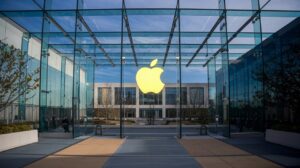Stagflation Fears Rise: Experts Weigh In on U.S. Economic Outlook; Understanding Stagflation and Its Impact on the U.S. Economy
Stagflation fears are mounting as inflation remains stubbornly high while economic growth slows. Recent data reveals that the U.S. Consumer Price Index (CPI) rose 3.5% in March 2025, marking its highest level in six months. Meanwhile, GDP growth for the first quarter slowed to an annualized rate of just 1.6%, signaling economic stagnation. These alarming trends are fueling concerns among economists, policymakers, and financial experts about the potential return of stagflation—a rare and challenging economic condition.
What Is Stagflation? A Deep Dive into Its Causes and Effects
Stagflation occurs when an economy experiences high inflation, slow economic growth, and rising unemployment simultaneously. This rare phenomenon is particularly dangerous because the usual economic tools to combat inflation—such as raising interest rates—can further slow economic growth, making the situation worse.
To understand stagflation, let’s break it down into three key components:
| Key Component | Definition | Impact on Economy |
|---|---|---|
| High Inflation | The general rise in prices of goods and services over time. | Reduces purchasing power, making everyday expenses more costly for households. |
| Slow Economic Growth | A decrease in the rate at which a country’s economy expands. | Results in lower wages, declining business profits, and weaker economic output. |
| Rising Unemployment | An increase in the number of jobless individuals actively seeking work. | Leads to decreased consumer spending, worsening the economic slowdown. |
Historically, the most well-known period of stagflation occurred in the U.S. during the 1970s when inflation soared to 14.8% in 1980, and the Federal Reserve had to raise interest rates to nearly 20% to combat it. This led to a severe recession and a long recovery period.
Key Economic Indicators Signaling Stagflation Risk
Several critical economic indicators are raising concerns that the U.S. may be heading toward stagflation:
- Rising Inflation: The CPI’s 3.5% increase in March 2025 highlights persistent inflationary pressures, particularly in energy, housing, and food prices.
- Slower GDP Growth: The economy grew at just 1.6% in Q1 2025, the slowest pace in two years, indicating a cooling economy and reduced consumer spending.
- Labor Market Resilience: Despite economic concerns, employers added 303,000 jobs in March, signaling that the labor market remains strong for now, though potential layoffs could emerge if growth continues to slow.
A Comparative View of Economic Conditions
To give a clearer picture, here’s how the current U.S. economy compares with past stagflation periods:
| Factor | 1970s Stagflation | Current U.S. Economy (2025) |
| Inflation Rate | Peaked at 14.8% in 1980 | 3.5% in March 2025 (still rising) |
| GDP Growth | Negative growth in multiple quarters | 1.6% in Q1 2025 (slowest in two years) |
| Unemployment Rate | Peaked at 10.8% in 1982 | Still low, but risks rising |
Expert Opinions: Are We Entering a Stagflation Period?
JPMorgan Chase CEO Jamie Dimon recently expressed concerns about stagflation, stating, “The U.S. economy looks more like the 1970s than we’ve seen before.” His warning aligns with other financial analysts who believe persistent inflation combined with slowing growth is a dangerous mix.
However, some economists argue that the U.S. economy is better positioned to avoid stagflation. A resilient labor market and proactive Federal Reserve policies could help prevent a full-blown crisis. Still, if inflation remains elevated while growth stagnates further, the risk of stagflation increases.
Impact on Consumers and Investors
If stagflation sets in, both consumers and investors will feel the effects:
- For Consumers: Higher prices on essential goods and services will erode purchasing power, making daily life more expensive.
- For Investors: Markets may become more volatile, with traditional asset classes like stocks and bonds reacting unpredictably to rising inflation and slower growth.
Strategies to Mitigate the Impact of Stagflation
To protect their finances during potential stagflation, individuals and businesses can consider the following steps:
| Strategy | Explanation |
| Cut Unnecessary Expenses | Focus on essential spending and reduce discretionary expenses. |
| Invest in Inflation-Protected Assets | Consider real estate, commodities, or Treasury Inflation-Protected Securities (TIPS). |
| Enhance Job Stability | Developing high-demand skills can help workers stay competitive in an uncertain job market. |
| Diversify Investments | A well-balanced portfolio that includes safe-haven assets can help mitigate risks. |
Conclusion: The Road Ahead for the U.S. Economy
While stagflation fears are rising, the economic outlook remains uncertain. If inflation continues to rise while growth slows further, the risk of stagflation will become more pronounced. However, strong employment figures and aggressive monetary policies could help stabilize the economy. Keeping a close eye on inflation, interest rates, and GDP growth will be crucial in determining whether the U.S. can avoid another stagflation crisis.
For further insights into stagflation risks, check this detailed analysis from CNBC.
[USnewsSphere.com / cnbc]





